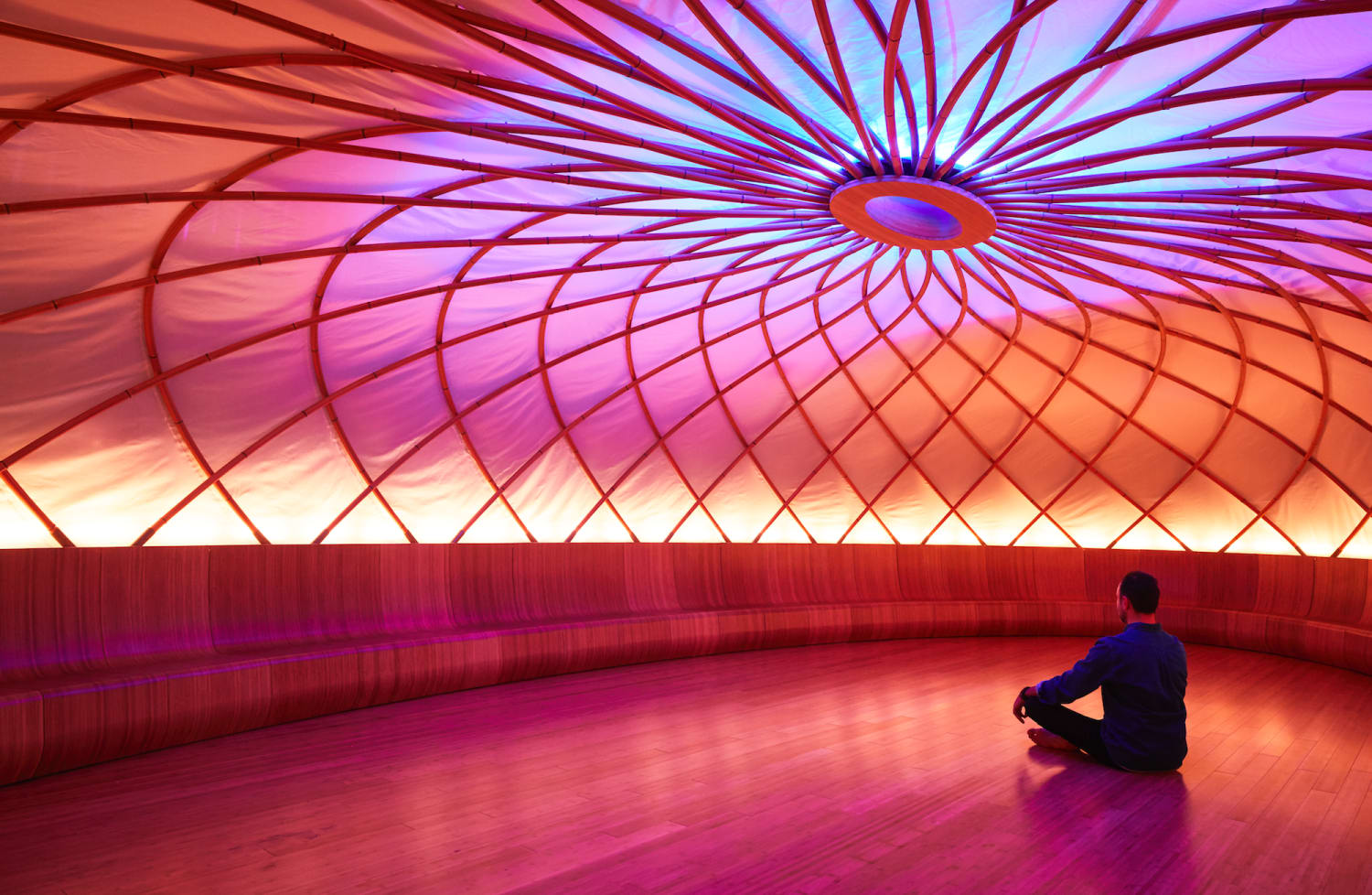Khajak Keledjian launched innovative New York–based meditation studio Inscape in November 2016, aiming to make the practice more relevant to modern lifestyles. The accompanying app offers guided meditations, relaxation techniques and breathing exercises, which are available at all hours.
Previously, Keledjian was CEO of multi-brand fashion retailer Intermix, which he cofounded with his brother. He credits the success of Intermix to his curatorial approach, and is applying the same methods to his new venture, which offers a wide range of immersive meditation and relaxation experiences.
We caught up with Keledjian about the inspiration behind Inscape, and why people are flocking to mindfulness meditation in growing numbers.
What was the inspiration for Inscape?
I’ve been doing yoga and meditation for the past decade. Until 2015, I was CEO of the retail chain company Intermix. In fashion, it’s always on, 24/7, nonstop. The only way for me to balance out that lifestyle was to get into yoga and meditation. I started seeing how it impacted my lifestyle, from a way of eating, to a way of exercising—just 360, overall.
After I sold the company in 2012 to Gap, as I was transitioning out of that role, the Wall Street Journal did an article about my interest in meditation and my ability to maintain balance as a successful CEO. The headline talked about my “$15,000 bet”—a friend said he would give me $15,000 if I could sit still for 15 minutes—and it took me six months even to find a place to sit still for that long in New York City.
That article led a lot of people to reach out to me. I started helping people one at a time and then I realized, “oh my god, I’m not a teacher, but people are looking for this and they’re inspired, so where should they go?”
2015 was a big year for me. I went to Burning Man, and was very inspired by the temple there, which is where people go to meditate. It’s completely quiet and the opposite of what most people imagine when they picture Burning Man. I thought, why is there is not an environment like this in New York City, in an urban setting?
At the end of the year, my father ended up in the hospital while vacationing in Armenia, and I went to see him. After a few days visiting the hospital, the only thing to visit was the ancient third-century and fourth-century monasteries, which are like caves inside the mountains. It’s cool, you light candles, you see their reflections, you feel the humidity on your skin. I thought, people did this hundreds of years ago, but what happened to it?
With Inscape, I wanted to create an urban space where people could go to reboot, while making it completely secular, modern, and relevant to 21st-century living.
What are you doing with Inscape that sets you apart from a previous wave of wellness centers?
What I did with Intermix was to reimagine fashion, and with Inscape, we’re reimagining meditation. We’re making it modern and relevant, from the environment, to the smell, to the design, to the product that you touch. We offer different meditation techniques that have been around for thousands of years, and we’re putting them under one platform. We have focus-based meditation, mindfulness meditation, visualization, sound journeys, and mantra-based meditation. It’s one platform with multiple techniques.




